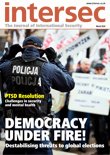Major incidents require co-ordinated action across a range of stakeholders. This can be achieved through innovative standards that provide interoperability and security between Mission-Critical Push-to-Talk (MCPTT) communications and enterprise-grade communication apps. By Roderick Hodgson, Secure Chorus In cases of emergency response to incidents, first-responders need to communicate efficiently and securely with a large number of… Read more »
Posts Categorized: April 2019
Preparing for the black swan
Mike Ahmadi discusses the importance of utilities security and why the Internet of Things changes everything Utilities are just coming online now. In this new connected world, utility providers understandably want to seize the innovations that the rest of the world is so eagerly getting their hands on. This wouldn’t be a problem if it… Read more »
Clearing the area
David Leigh reports on the importance of rendering safe the explosive remnants of war De-mining and explosive ordnance disposal (EOD) have been around for about the last 100 years. Historically it was the preserve of the military to clear up the battlefields where armies met and fought out their encounters and it is estimated that… Read more »
Filling the knowledge gap
Sarah Hayward-Turton examines the important role of training in the professionalisation of the security sector When was the last time you took a course and gained a reputable qualification? For some it will be school, college or university, others will have heard: “You have passed” after their driving test and decided that would be the… Read more »
The tobacco black market
ITSA reports on how tobacco products are used for illicit means and why control measures are vital for international security Estimates for the size of the illicit tobacco market worldwide vary but run into the billions of packs per year. As with many crimes, it’s difficult to be precise about the magnitude of this illicit… Read more »
Predicting family terror networks
Dean C Alexander provides a six-stage model for spotting the signs of potential terrorist attackers The purpose of a model to predict family terror networks is to aid the government, private sector, nonprofits, non-governmental organisations and the public to anticipate and understand possible kin-linked extremism. The model posits that family networks and relationships are highly… Read more »
Electromagnetic interference
Peter Dorey navigates the complexity of the electromagnetic compatibility of defence systems One of the difficulties with integrating military off-the-shelf (MOTS) and commercial off-the-shelf (COTS) products into complex military systems is achieving electromagnetic compatibility (EMC). Almost all electronic devices generate or are susceptible to electromagnetic interference, and for this reason regulatory authorities across the world… Read more »






